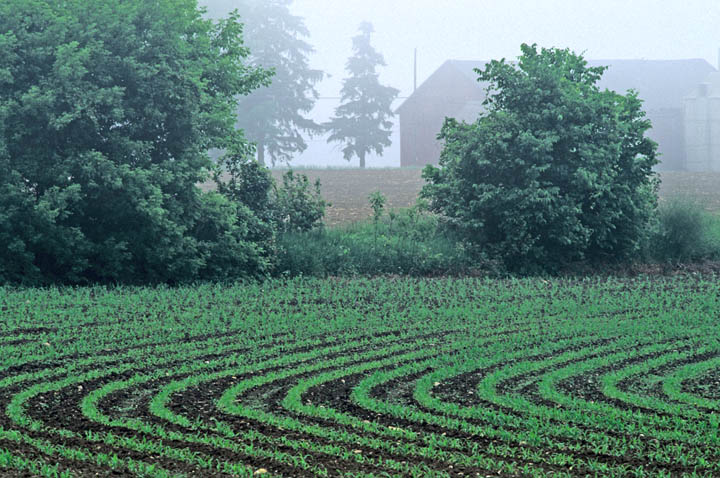December 29, 2010

The farm sector will be a bright spot in the Missouri economy in 2011, says a University of Missouri economist.
“Net farm income is expected to exceed $3 billion, a milestone reached for the third time since 2004,” says Scott Brown, with MU Food and Agricultural Policy Research Institute (FAPRI). “More incredible is that farm income never topped $1.5 billion prior to 2004.”
Planted areas for soybeans, corn, wheat, cotton, rice, sorghum and harvested hay are expected to total near 14 million acres in 2011, Brown said. That is an increase of over 650,000 acres above 2010.
“This threshold has only been reached twice before in the last 25 years. Although 14 million was a common planted acreage in the state before 1986 when the Conservation Reserve Program began to expand.”
While a large part of the agricultural recovery comes on the crops side, Brown said, that higher feed prices will constrain expansion of the livestock sector.
However, prices paid for meat will continue to climb, as the U.S. economic recovery continues and a growing foreign demand.
As demand expands in the next couple of years, producers will see prices that offset higher input costs.
“While production costs have gone up sharply in recent years, the rate of increase should begin to drop, providing energy prices and other inputs remain stable.
In any outlook, farmers should keep in mind unpredictable weather, surges in energy prices and unexpected disease outbreaks, Brown said. All have negative impact on profitability.
“In spite of the bright outlook, Missouri producers should prepare for volatility that has hit agriculture recently.” Missouri production expenses increased from $5.5 billion in 2005 to nearly $7.5 billion in 2008, an increase of over 35 percent in three years,” Brown said.
In the past when crop prices increased rapidly, inflation grew. While some inflation is seen, there is nothing like previous times, Brown said.
The growth in crop acres comes not just from released CRP ground but also a return of double-crop acres. Because of weather, double-crop acres fell in 2009 and 2010.
In the USDA conservation reserve, farmers are paid rent to keep erodible land in grass instead of row crops.
Government payments to farmers will be down. With changes in the economy, Missouri producers are expected to see some of the lowest levels in government payments since 1998 during the next few years. High market prices for most commodities have reduced payments to only 5 percent of the total income for the farm sector from 2007 to 2009.
MU FAPRI maintains economic models of livestock and grains. The models give 10-year baseline projections for the U.S. Congress. FAPRI provides independent analysis of proposed farm legislation, including the farm bill. FAPRI is a part of the MU College of Agriculture, Food and Natural Resources.
You May Also Like




